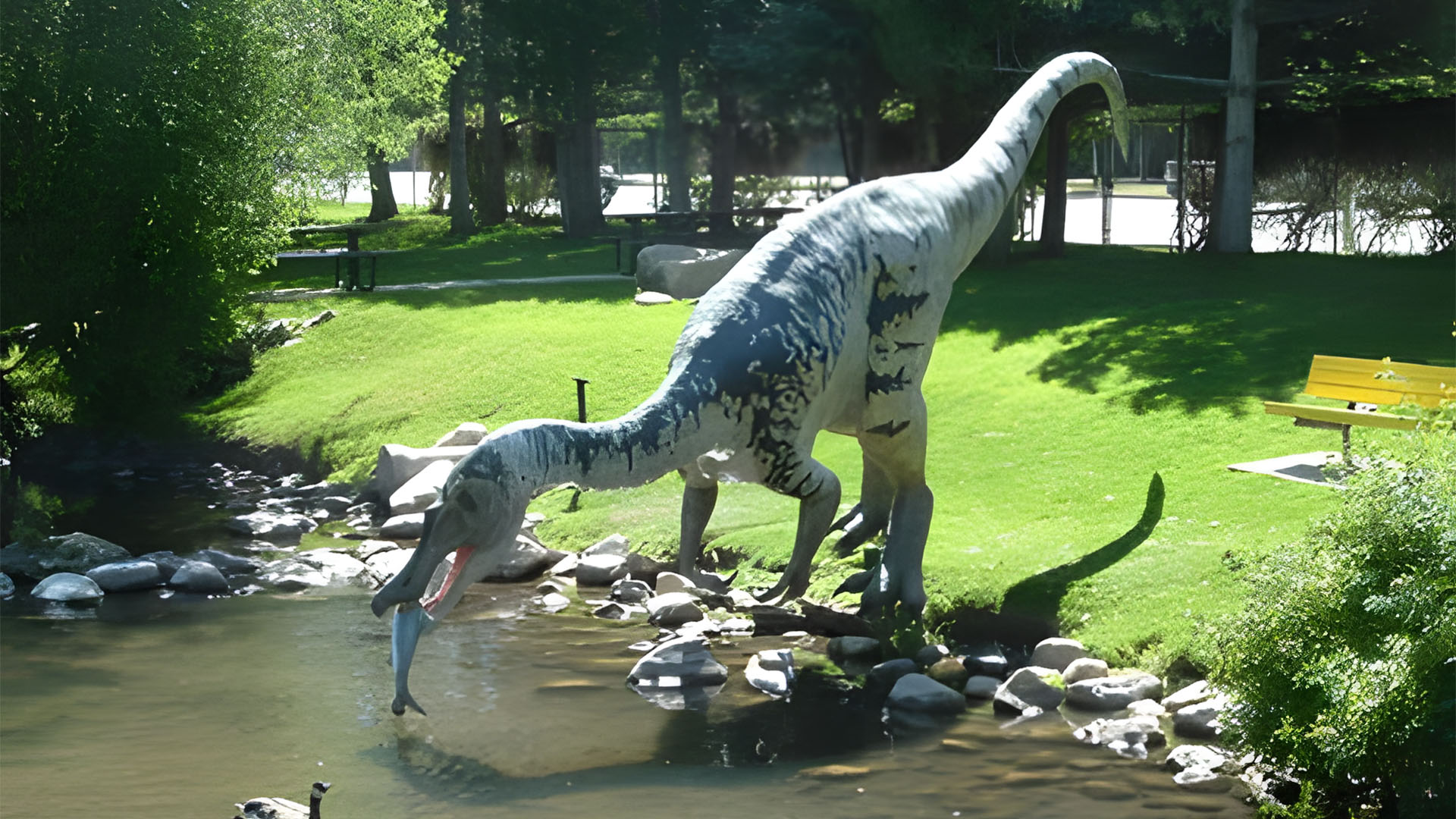The holotype Baryonyx specimen ranks as the most complete theropod found in the British isles. It’s not exclusively a Brit, though: Baryonyx bones have been identified in Portugal. Some scientists also consider Suchomimus, a close cousin with a prominent ridge on its back, a different species of Baryonyx, in which case it’s a north African animal as well.
- Amateur fossil hunter William J. Walker discovered the first Baryonyx bones in a quarry in Surrey. According to a Weekly Reader I read a few years after its initial discovery in 1986, his young son actually uncovered the first bone, which was the eponymous claw. I haven’t been able to substantiate that since, though, so take it with a whopping grain of salt. However, the discovery of Baryonyx does demonstrate the important role amateurs play in major fossil finds. If you enjoy dinosaurs and want to get involved, educate yourself in the extraction and preparation processes as much as possible before going dinosaur hunting. If you do it right, you further the science. If you do it halfway, you risk the fate that befell Baryonyx’ s Brazilian cousin: scientists named it Irritator because of the interference of fossil collectors that damaged part of its skull. All that said, allow me to plug Utah’s own amateur fossil association, the Utah Friends of Paleontology. And stay tuned here for more helpful dino hunting info—same dino time, same dino channel!
- “Baryonyx” means “heavy claw.” No one is quite sure why spinosaurs like Baryonyx developed such formidable claws, though if their forelimbs follow the general theropod pattern they probably helped pull larger prey closer to the chest. Theories from the late 80s depict Baryonyx using those claws to swat fish from the water into its waiting jaws. Those pictures also show it standing on all fours—so it beat Spinosaurus out on the controversial quadrupedal posture by almost 30 years! However, no theropod could bend its forelimbs the way those old bear-like reconstructions illustrate.
- Spinosaurs’ weird skulls have naturally drawn scientists’ attention, and several studies have drawn similar conclusions on their abilities and functions. They describe jaws adapted to catching fish, much like those of modern gharials, African slender-snouted crocodiles, and even conger eels. They didn’t need to swat fish to catch them (even if they could).
- The spinosaur taste for sashimi has drawn much attention in recent years. In Baryonyx’s case, at least, it pursued a more varied diet than specialized piscivory. The mechanics of its skull more closely resemble modern generalists than those of the specialized fish-eating gharial or Spinosaurus itself. A pterosaur specimen from Brazil corroborates a varied diet for at least some spinosaurs: it was found with a spinosaurid tooth embedded in it. Baryonyx’s holotype itself preserved evidence that in addition to fish, it ate young dinosaurs as well. This varied diet may explain the need for enlarged claws: if the specilizations of the skull made it harder for Baryonyx to process the larger terrestrial prey other carnosaurs specialized in, it might have compensated by using its claws differently. Only further testing can clarify this speculation, however.
- Studies of isotope signatures in spinosaur bones confirm they spent much of their time in the water. These isotopes occur in different proportions in different environments. They enter animals’ bones through their diet and are reliable indicators of their habitual stomping grounds. The signatures of spinosaurs clearly contrast with other theropods of comparable size, but closely resemble those of crocodiles and water-dwelling turtles. Though this line of evidence does not prove a semi-aquatic lifestyle by itself, it does confirm that spinosaurs preferred more surf than turf in their diet, so to speak. Though no direct evidence exists to confirm spinosaurs ate crocodiles, hypothetical water-borne mammals or primitive waterfowl, or water snakes, it’s likely that anything living around fresh water and was large enough to bother with made up a balanced spinosaur diet.
Sources:
Charig, A. J., & Milner, A. C. (1986). Baryonyx, a Remarkable New theropod Dinosaur. Nature, 324(6095), 359-361.
Charig, A. J., & Milner, A. C. (1997). Baryonyx walkeri, a Fish-Eating Dinosaur from the Wealden of Surrey. Bulletin-Natural History Museum Geology Series, 53, 11-70.
Charig, A. J., & Milner, A. C. (1990). The Systematic Position of Baryonyx walkeri, in the Light of Gauthier’s Reclassification of the Theropoda. Dinosaur Systematics: Approaches and Perspectives, 127-140.
Mateus, O., Araujo, R., Natario, C., & Castanhinha, R. (2011). A New Specimen of the Theropod Dinosaur Baryonyx from the Early Cretaceous of Portugal and Taxonomic Validity of Suchosaurus. Zootaxa, 2827(5).
Rayfield, E. J., Milner, A. C., Xuan, V. B., & Young, P. G. (2007). Functional Morphology of Spinosaur ‘Crocodile-Mimic’ Dinosaurs. Journal of Vertebrate Paleontology, 27(4), 892-901.
Vullo, R., Allain, R., & Cavin, L. (2016). Convergent Evolution of Jaws between Spinosaurid Dinosaurs and Pike Conger Eels. Acta Palaeontologica Polonica, 61(4), 825-828.
Cuff, A. R., & Rayfield, E. J. (2013). Feeding Mechanics in Spinosaurid Theropods and Extant Crocodilians. PLoS One, 8(5), e65295.
Buffetaut, E., Martill, D., & Escuillié, F. (2004). Pterosaurs as Part of a Spinosaur Diet. Nature, 430(6995), 33-33.
Amiot, R., Buffetaut, E., Lécuyer, C., Wang, X., Boudad, L., Ding, Z., … & Mo, J. (2010). Oxygen Isotope Evidence for Semi-Aquatic Habits among Spinosaurid Theropods. Geology, 38(2), 139-142.
